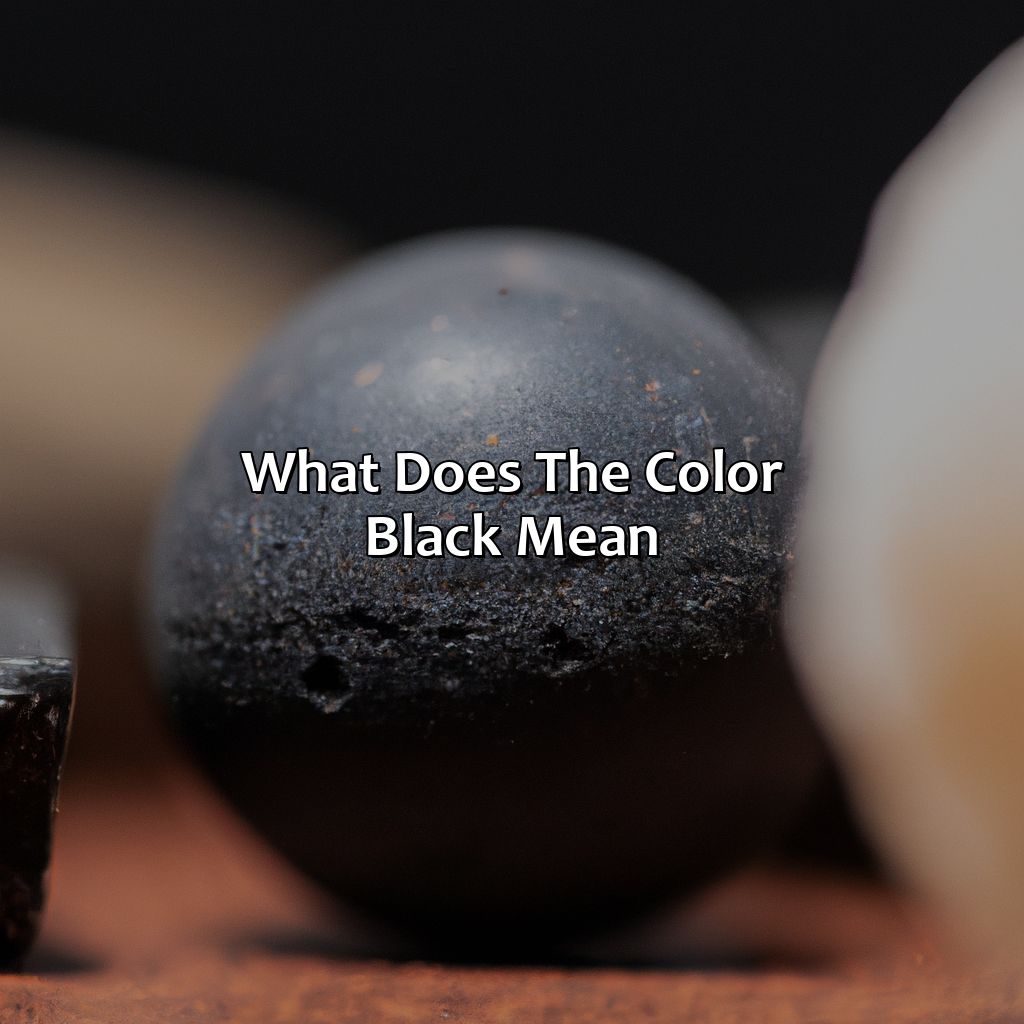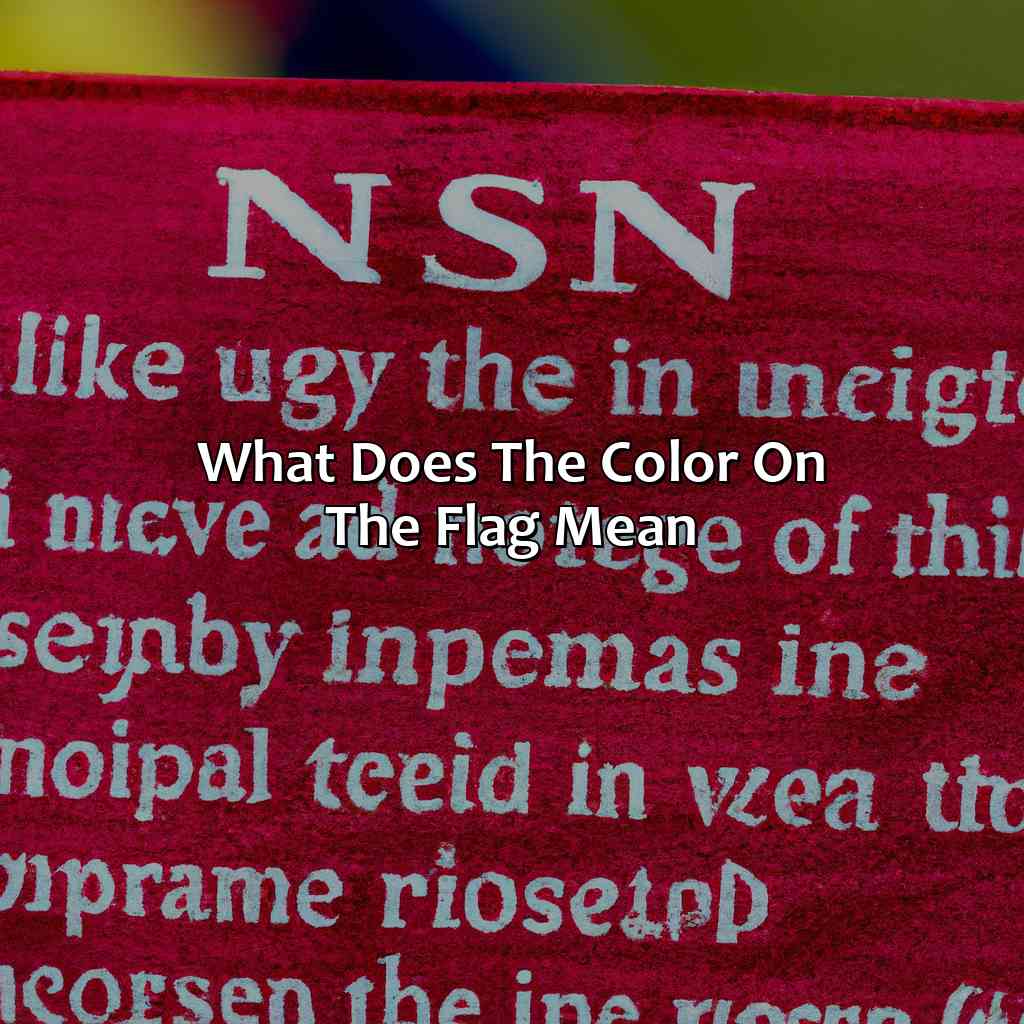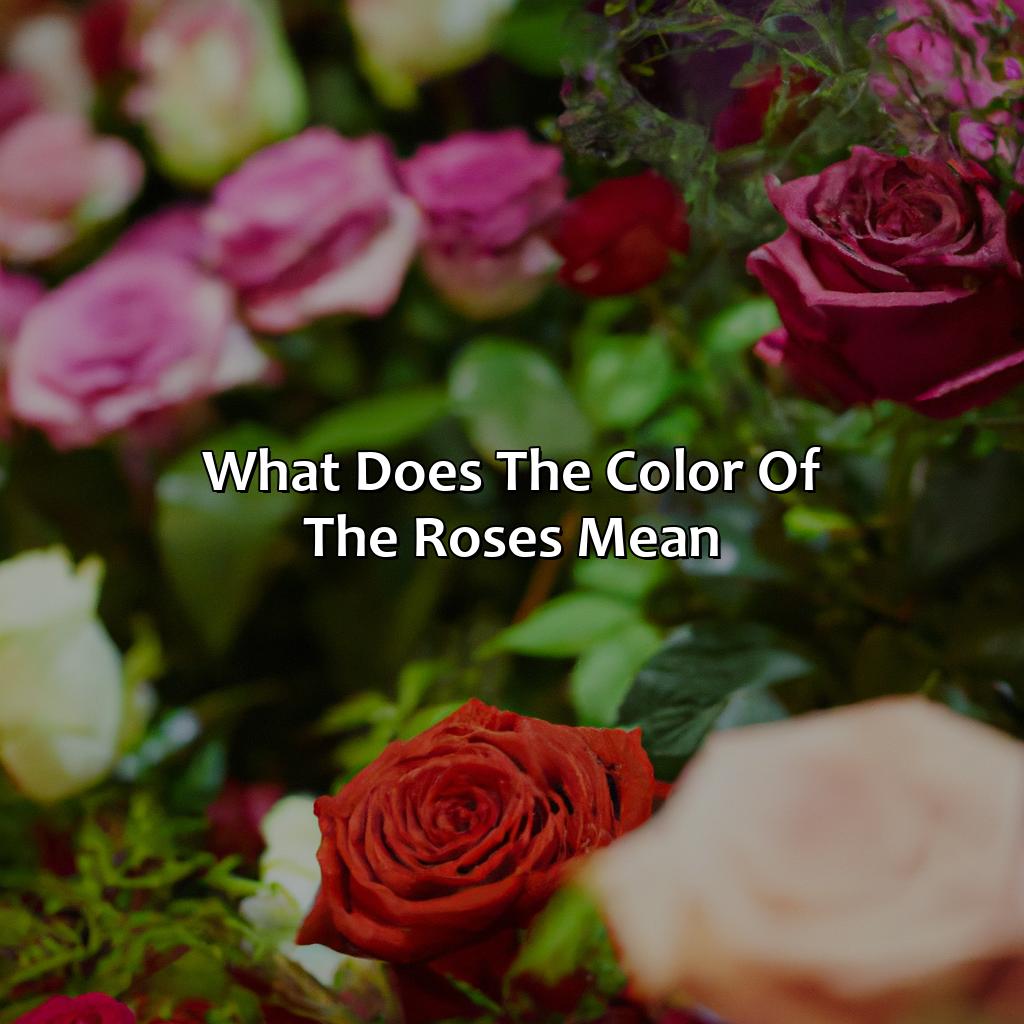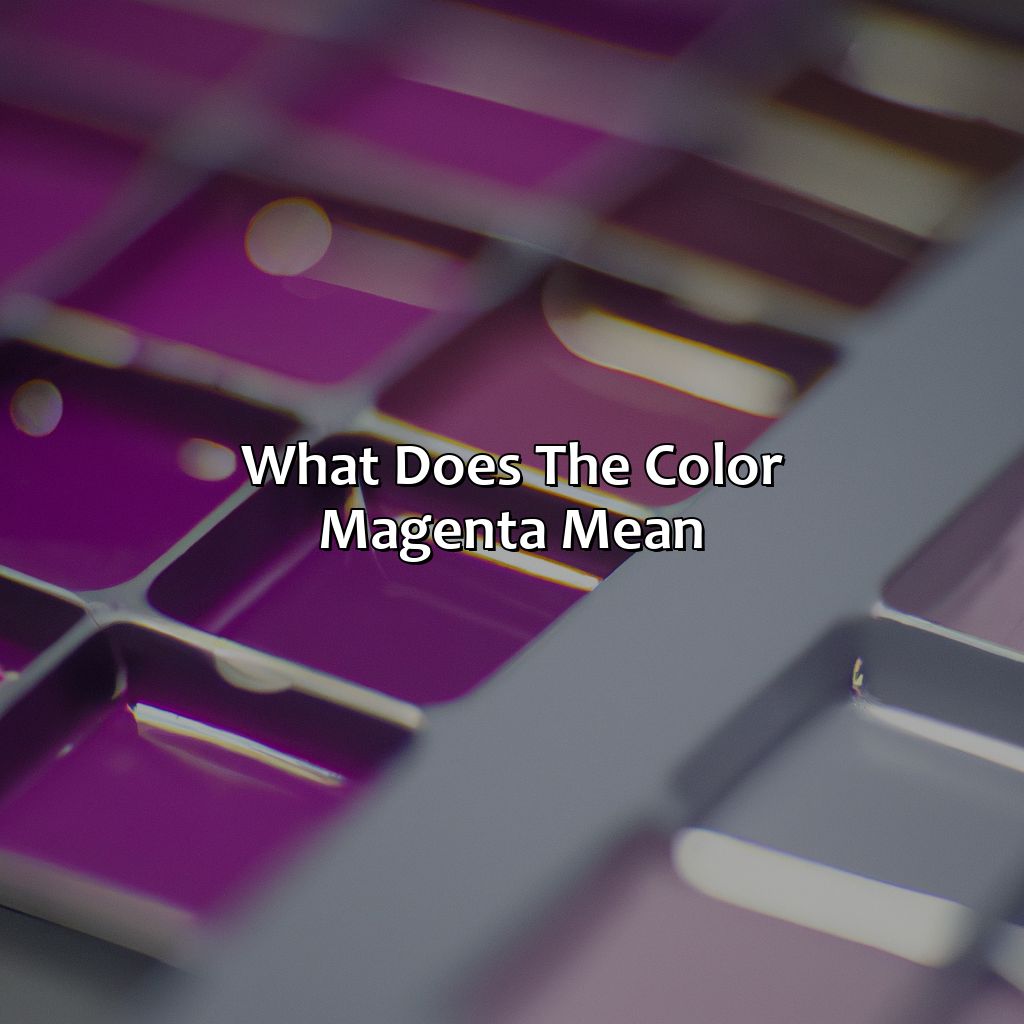Key Takeaway:
- Black is a color with a complex history and varied interpretations. It is often associated with power, elegance, sophistication, and formality, but also with darkness, death, mystery, and negativity.
- Historically, black has been a symbol of resistance and empowerment for marginalized communities, including Black Americans and LGBTQ+ individuals. It has also been used to represent mourning and grief, as well as rebellion and counterculture movements.
- Psychologically, black is associated with strength, authority, and control, but also with fear, depression, and sadness. It can be used in therapy and spirituality to promote grounding, protection, and introspection.
The Meaning of Black as a Color

Photo Credits: colorscombo.com by Albert Lopez
Delve into the history, culture, and psychology of black to understand its meaning. History has seen black power and Black Lives Matter. Culture reflects black art, music, literature, and humor. Psychologically, black can relate to spirituality, religion, or even magic.
Historical Significance of Black
Black has deep roots in history, from its symbolism as a color of mourning to its connotation with power in African history. The significance of black throughout history tells a story of resistance and strength, exemplified by movements like Black Lives Matter. In contemporary culture, the color still holds meaning and is prominently featured in art, fashion, and design. Its versatility makes it a powerful tool for creating visual impact and conveying emotion. As such, understanding the historical context behind the color can add depth to its use in modern-day representation.
Throughout black history, black has been associated with both mourning and rebellion. In Western culture, wearing black traditionally signifies mourning or loss. However, in African cultures, black represents power and wealth. The adoption of the color by the Black Power movement was also symbolic of resistance against oppression. Today, Black Lives Matter uses black as a symbol for solidarity in their fight for racial justice.
In art and literature, black is often used to convey mood or tone. For example, Edgar Allan Poe often used black to represent death or darkness. In contrast, some artists use the color to convey elegance or sophistication; Coco Chanel famously said that “black has it all.” In fashion, designers have long used the color for classic pieces that remain timeless.
In interior design, black can create a dramatic effect when used sparingly as an accent color. It can ground a space or provide contrast against lighter colors. Graphic designers often incorporate black into logos for its boldness and flexibility on various backgrounds.
Pro Tip: When using black as a design element or symbolically representing something important in our society like racial justice and equality through initiatives like Black History Month or Black Lives Matter movement campaigns – it’s important not to appropriate such powerful iconography without fully understanding its significance within our history and culture.
Black is not just a color, it’s an attitude – a cultural emblem of boldness and rebellion.
Cultural Interpretations of Black
Black is a color that holds immense cultural significance. It has been used to symbolize various emotions, beliefs, and values in different cultures around the world. In black culture, it is often associated with strength, power, and sophistication. Black art, music, literature, and humor also reflect the cultural interpretations of black.
The color black has long been associated with mourning and grief in many cultures. In African cultures, black is often used as a symbol of death and mourning. However, in other cultures like Japan and China, black represents life and prosperity. Black is also frequently used in fashion to represent elegance and sophistication.
In black culture specifically, the color is often seen as a symbol of strength and power. The roots of this association can be traced back to the history of slavery when black people were oppressed and treated as less than human. Through their struggle for freedom and equality over the years, many have come to see blackness as a source of pride rather than shame.
Black humor also plays an essential role in contemporary African-American culture. It often serves as a means of coping with oppression and finding ways to resist it through satire.
History shows us how European colonialism perpetuated white supremacy by labeling dark skin tones inferior while elevating lighter ones. Furthermore, we see how Black art communicates themes such as race relations both socially constructed prejudice fueled by racism while simultaneously unearthing definitive narratives for authentic experiences otherwise omitted from popular perspectives.
In summary, the cultural significance of black is multifaceted; it signifies mourning yet embodies elegance; carries sorrow yet embraces joy; highlights oppression but bestows power within resilience. Black is not just a color, it’s a therapy session, a spiritual journey, and a magic trick all in one.
Psychological Associations of Black
The association of black with negative and fearful emotions such as sadness, mourning, and death is deeply rooted in the psychology of color. Black is also seen as a symbol of power, seriousness, and sophistication. In therapy, black is sometimes used to help individuals confront their fears or unresolved past experiences associated with loss or grief.
Black has various spiritual and religious connotations too. In some cultures, it represents the invisible or hidden aspects of life that are mysteriously powerful. The color black is also associated with mystery and secrecy, making it a well-known aspect of those who practice black magic.
Black in design can be used to create moodiness in interior design while graphic designers use black for elegance and sophistication in their work. Web designers have the option of creating bold statements with certain elements on their website by using stark contrasts against a dark background.
If you want to incorporate black into your designs or life, consider the psychological impact it may have on you or others. Alternatively, try different exercises incorporating black color therapy into your everyday routine to explore the effects further. Understanding these deep-rooted associations will lead to more meaningful visual communication that leaves an everlasting impression on your audience.
Black isn’t just a color, it’s a canvas for endless symbolism and metaphors in literature, art, and even our dreams.
Symbolism and Representations of Black
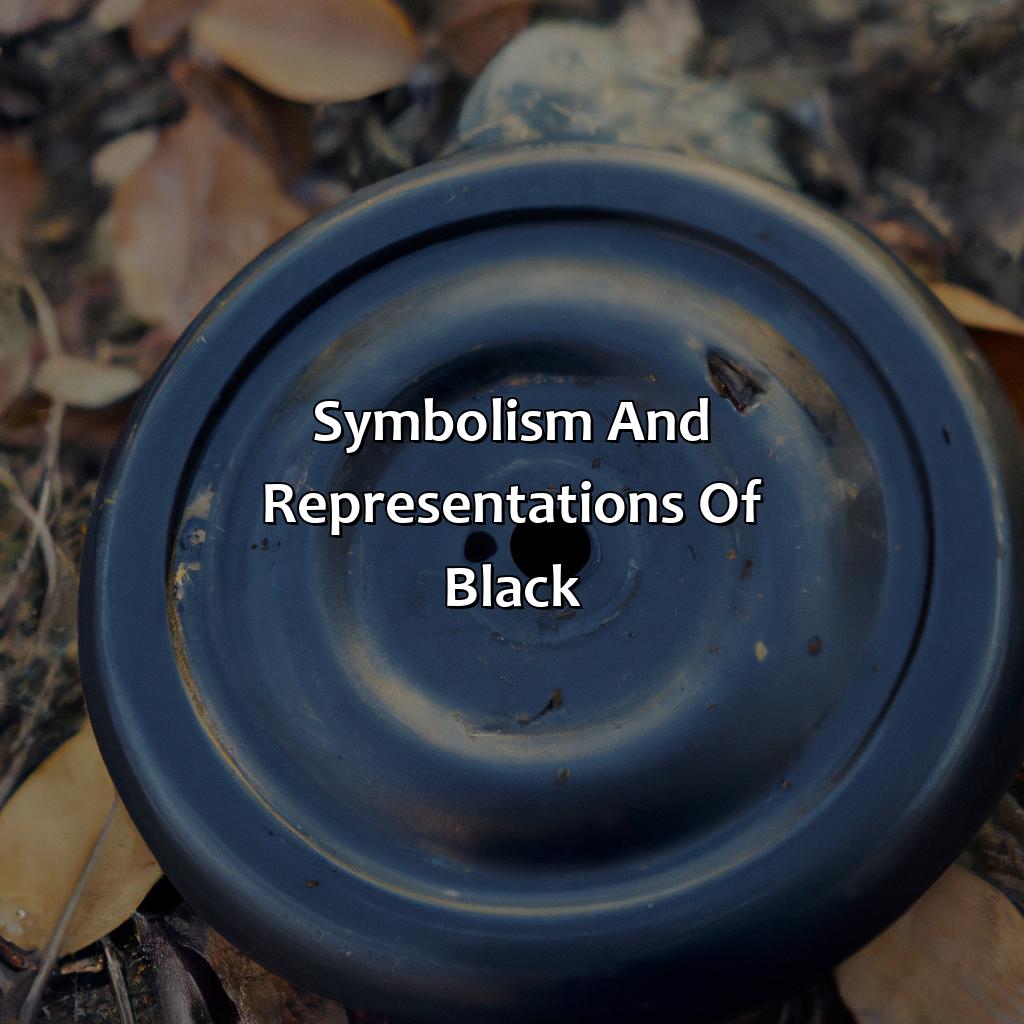
Photo Credits: colorscombo.com by Billy Sanchez
To comprehend the symbolic and representational meanings of black, explore its metaphors, connotations, and imagery. Symbolism in art, literature, and fashion can reveal the importance of this hue. Moreover, investigate its symbolism in flags and national insignias, such as black flags and black emblems.
Symbolism in Art and Literature
Black Symbolism in Literature and Art
The color black has profound symbolism in literature and art. From the Black Death in medieval Europe to the mourning attire of Victorian England, black has been used to represent death, sorrow, and grief. In literature, it is often used to evoke a sense of darkness or foreboding.
In art, black can be used to create a powerful contrast with other colors or to give an image a sense of depth. It can also symbolize mystery and intrigue. The use of black as both a background and foreground color can create complex narratives that draw viewers into the artwork.
Unique details about black symbolism in literature and art include the use of black as a symbol of rebellion or resistance in modern movements such as Black Lives Matter. In Afrofuturism, blackness is celebrated as a creative force that defies conventional expectations.
According to William Shakespeare, “All the world’s a stage, And all the men and women merely players; They have their exits and their entrances, And one man in his time plays many parts.” In Hamlet, Hamlet says “To die – to sleep…To sleep – perchance to dream: ay, there’s the rub,” suggesting that death may be only a form of sleep wherein dreams are possible.
Source: https://www.thoughtco.com/quotes-from-hamlet-2832925
Black is always in style, whether it’s classy black suits or edgy black leather jackets in fashion and advertising.
Symbolism in Fashion
Fashion has been associated with the color black for centuries. Black evokes a sense of sophistication, elegance, and mystery in fashion. It is traditionally used to create an illusion of slimmer physique and is usually chosen as a nightwear color. Black is also used extensively in advertising and branding.
In fashion, black has symbolized rebellion, non-conformity and counterculture movements. It was popularized by subcultures such as punk rockers, goths and emo kids. However, black also epitomizes timelessness, simplicity and classiness making it a fashion staple that never goes out of style.
Furthermore, the use of black in clothing allows the fabric to be versatile and complement multiple outfits easily. Black can be paired with bold colors like red or shades like white depending on the desired look. Black’s spectrum includes countless shades ranging from matte jet to glossy midnight hues which allow designers to capture their vision effortlessly.
The incorporation of black color in advertising and branding has been key due to its positive associations such as power, sophistication and luxury while negating negative aspects such as negativity or sadness.
Don’t miss out on creating captivating brands utilizing black’s elegant presence in design. Utilize the powerful symbolism behind the all-encompassing shade that is black along with vibrant co-branding while approaching marketing solutions today!
“The only thing worse than a black flag is a white flag…because it means you’ve already surrendered.”
Symbolism in Flags and National Emblems
Black symbolizes many things across cultures and history, including darkness and death. Its use in flags and national emblems is no exception. Black flags are often associated with pirates and anarchy, while black national emblems can represent mourning or a specific cultural identity. For example, the black flag of ISIS represents their Islamic fundamentalist beliefs.
Countries like Germany and Belgium have used black in their flags as part of a historical legacy, while others such as Jamaica incorporate it to represent the country’s struggles for freedom. Beyond this, black is also used symbolically in flags to represent political beliefs or movements.
One unique example is the black flag often used by environmental activists, representing the need to combat ecological devastation caused by humans. Overall, black in flags and national emblems can hold various symbolic meanings dependent on cultural or historical context.
If you’re designing a flag or emblem that incorporates black, consider how its use will be interpreted within your culture or group. Ensure that it accurately reflects your values or beliefs while being respectful of any cultural sensitivities around color symbolism.
Black is the perfect canvas for design, whether it’s used to add drama to interiors, as a powerful graphic element, or a striking contrast in nature photography.
Black as a Design Element

Photo Credits: colorscombo.com by Michael Carter
To use black in design the right way, you have to understand its meaning. We will explore how black impacts design’s aesthetics, emotions and visuals.
We’ll look at black in interior design, with black marble, leather and granite. Then, we’ll discuss black in graphic design: black hat, panther and widow. Lastly, we’ll explore how black is used in web design: background and font choices.
Black in Interior Design
Due to its innate versatility and impact, the color black is widely utilized in interior design. It is most commonly employed as an accent color or as a backdrop for other statement pieces. Black marble, black leather, and black granite are frequently used materials that can add a touch of sophistication and elegance to any space.
Black furniture or décor with sleek and sharp lines offer a contemporary feel to modern interiors. In contrast, pairing black with warmer colors such as beige or yellow provides a cozy and inviting ambiance. The strategic use of lighting can also create an illusion of depth when using black in small spaces.
When using black as a primary color, it is essential to balance it out with contrasting shades like white or metallic tones to avoid a gloomy atmosphere. One can combine different textures such as velvet and fur fabrics to create an interesting contrast in visual appeal.
Incorporating plants into the décor adds life and vivacity that balances out the starkness of black decor. The greenery gives warmth while keeping the space airy.
Overall, adding black touches in interior design brings sophistication, drama, and an air of elegance into the design. You don’t necessarily have to make everything black; instead, subtle applications can work wonders when trying to create aesthetic impacts within your living spaces.
Graphic designers love to use black, just like the Black Panther loves his black suit and the Black Widow loves her black ops.
Black in Graphic Design
The use of dark hues in graphic design is a crucial element in evoking emotions and messages for the audience. Dark colors such as black have versatile meanings, both positive and negative, that designers utilize. With regards to graphic design, black has been symbolized as sophistication, elegance, boldness, and power.
Designers use black to create emphasis or contrast in their designs. Black backgrounds draw out brighter colors within images or text, making them pop out more prominently. Additionally, black is often associated with mystery and danger; thus, designers may use it to add intensity or suspense to their work.
On the other hand, black can be overly used in a design that can make it static or flat. Black tends to represent negativity or evil when overused without proper context. However, when applied correctly with white or other soft colors, it could evoke positivity and purity.
A renowned example of incorporating black into graphic design is in Marvel’s “Black Panther” concept art and character illustrations. The movie portrayed the African culture profoundly through graphic design elements with interesting uses of monochromatic color schemes featuring various shades of blacks.
Another creative example of using black in graphic design would be in Nike’s limited edition “Black hat” shoes that utilized organic materials that change their color when exposed to light while featuring a binary check mark logo on its side.
Lastly, one unique utilization of black widow spiders combined with reds inspired a superior German designer named Lorri Zimmermann creating elegant graphic patterns over fabrics tremendously praised by clients globally.
Black may be the absence of color, but in web design it’s the presence of elegance and sophistication with a touch of mystery.
Black in Web Design
Black plays a significant role in web design. It is used as a background or font color to create a sophisticated and elegant look in websites. The use of black is believed to add depth, contrast, and emphasize other colors used on the website. It also helps create a sense of formality on the website.
Moreover, black as a background color can evoke different emotions depending on its applications. For instance, it can represent power and authority when used in corporate websites or simplicity and elegance when paired with white in minimalistic designs. Additionally, using black font on light backgrounds increases readability and creates a striking visual impression.
Interestingly, numerous studies have shown that users perceive websites with black background better than those with white background. They are more suitable for photography websites, artist portfolios or e-commerce sites selling luxury products.
According to UX designer Alex Bigman’s research, adding highlights or subtle textures to the black background rather than pure black can make text pop more without sacrificing readability.
(Source: Canva Design School)
Some Facts About What Does the Color Black Mean:
- ✅ Black is associated with power, sophistication, and elegance. (Source: Verywell Mind)
- ✅ Black can also convey negativity, emptiness, and death. (Source: Bourn Creative)
- ✅ The color black is used in many logos and branding to create a modern and timeless feel. (Source: Design Shack)
- ✅ Black is the absence of all colors and is often used to create contrast and drama in artwork and design. (Source: ThoughtCo)
- ✅ In some cultures and religions, black is associated with mourning and is worn at funerals and other somber occasions. (Source: Encyclopedia Britannica)
FAQs about What Does The Color Black Mean
What does the color black mean?
The color black is often associated with power, elegance, mystery, and sophistication. It can also represent death, mourning, and darkness.
In what cultures is black considered a negative color?
In some cultures, black is associated with negativity and evil. For example, in Western cultures, wearing all black is often considered a sign of mourning and is associated with death. In some African cultures, black is associated with evil spirits and witchcraft.
What emotions are evoked by the color black?
The color black can evoke various emotions, including sadness, grief, fear, anger, and even rebellion. It can also represent a sense of power and sophistication.
How is the color black used in art and design?
Black is often used in art and design to create contrast and make other colors stand out. It can also be used as a background color to make other colors pop. In fashion, black is often used because it is slimming and matches with almost any other color.
What does the color black symbolize in literature and poetry?
The color black is often used symbolically in literature and poetry to represent death, darkness, evil, and mystery. It can also represent power and sophistication in some contexts.
What are some common phrases and idioms that use the color black?
Some common phrases and idioms that use the color black include “black as night,” “black sheep,” “blackout,” “black market,” “pitch black,” and “the black death.”
